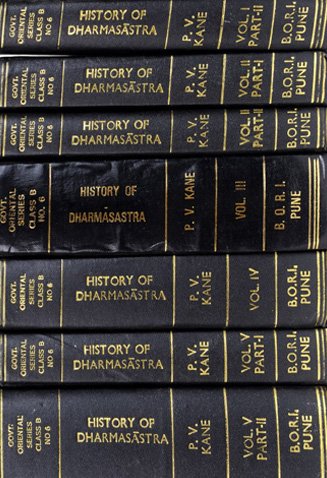Caitri, Caitrī: 12 definitions
Introduction:
Caitri means something in Hinduism, Sanskrit, Marathi. If you want to know the exact meaning, history, etymology or English translation of this term then check out the descriptions on this page. Add your comment or reference to a book if you want to contribute to this summary article.
Alternative spellings of this word include Chaitri.
In Hinduism
Dharmashastra (religious law)
Source: Sacred Texts: The Grihya Sutras, Part 2 (SBE30)Caitrī (चैत्री) refers to one of the seven Pākasaṃsthās or Pākayajñas (groups of seven sacrifices).—Hārīta says: “Let a man offer the Pākayajñas always, always also the Haviryajñas, and the Somayajñas (Soma sacrifices), according to rule, if he wishes for eternal merit”.—The object of these sacrifices [viz., Caitrī] is eternal happiness, and hence they have to be performed during life at certain seasons, without any special occasion (nimitta), and without any special object (kāma). According to most authorities, however, they have to be performed during thirty years only. After that the Agnihotra only has to be kept up.
Source: Shodhganga: Vaikhanasa Grhyasutra Bhasya (Critical Edition and Study)Caitrī (चैत्री) refers to the “sacrifice on the day of the full moon in the month of Caitra” and represents one of the various rituals mentioned in the Vaikhānasagṛhyasūtra (viz., vaikhānasa-gṛhya-sūtra) which belongs to the Taittirīya school of the Black Yajurveda (kṛṣṇayajurveda).—The original Gṛhyasūtra of Vaikhanāsa consists of eleven chapters or “praśnas”. Each praśna is subdivided into sub-divisions called “khaṇḍa”. But only the first seven chapters deal with actual Gṛhyasūtra section. Caitrī is one of the seven pākayajñas.

Dharmashastra (धर्मशास्त्र, dharmaśāstra) contains the instructions (shastra) regarding religious conduct of livelihood (dharma), ceremonies, jurisprudence (study of law) and more. It is categorized as smriti, an important and authoritative selection of books dealing with the Hindu lifestyle.
Languages of India and abroad
Marathi-English dictionary
Source: DDSA: The Molesworth Marathi and English Dictionarycaitrī (चैत्री).—f (S) The day of full moon of caitra.
--- OR ---
caitrī (चैत्री).—a Relating to the month caitra.
Source: DDSA: The Aryabhusan school dictionary, Marathi-Englishcaitrī (चैत्री).—f The full-moon day of caitra. a Relating to caitra.
Marathi is an Indo-European language having over 70 million native speakers people in (predominantly) Maharashtra India. Marathi, like many other Indo-Aryan languages, evolved from early forms of Prakrit, which itself is a subset of Sanskrit, one of the most ancient languages of the world.
Sanskrit dictionary
Source: DDSA: The practical Sanskrit-English dictionaryCaitri (चैत्रि).—m. The month called Chaitra.
Derivable forms: caitriḥ (चैत्रिः).
See also (synonyms): caitrika, caitrin.
--- OR ---
Caitrī (चैत्री).—The day of full-moon in the month of Chaitra.
Source: Cologne Digital Sanskrit Dictionaries: Shabda-Sagara Sanskrit-English DictionaryCaitri (चैत्रि).—m.
(-triḥ) The month Chaitra. E. citrā, and iñ aff.
Source: Cologne Digital Sanskrit Dictionaries: Monier-Williams Sanskrit-English Dictionary1) Caitrī (चैत्री):—[from caitra] a f. (with or without paurṇamāsī) the day of full moon in month Caitra, sacrifice offered on that day, [Śāṅkhāyana-śrauta-sūtra iii, 13, 2; Kātyāyana-śrauta-sūtra xiii; Lāṭyāyana x; Pāṇini 4-2, 23; Mahābhārata xii, xiv.]
2) Caitri (चैत्रि):—[from caitra] [varia lectio] for trin, [Horace H. Wilson]
3) Caitrī (चैत्री):—[from caitriyāyaṇa > caitra] b f. See tra.
Source: Cologne Digital Sanskrit Dictionaries: Yates Sanskrit-English DictionaryCaitri (चैत्रि):—(triḥ) 2. m. Month Chaitra.
Source: DDSA: Paia-sadda-mahannavo; a comprehensive Prakrit Hindi dictionary (S)Caitrī (चैत्री) in the Sanskrit language is related to the Prakrit words: Cittī, Cettī.
[Sanskrit to German]
Sanskrit, also spelled संस्कृतम् (saṃskṛtam), is an ancient language of India commonly seen as the grandmother of the Indo-European language family (even English!). Closely allied with Prakrit and Pali, Sanskrit is more exhaustive in both grammar and terms and has the most extensive collection of literature in the world, greatly surpassing its sister-languages Greek and Latin.
Kannada-English dictionary
Source: Alar: Kannada-English corpusCaitri (ಚೈತ್ರಿ):—[noun] = ಚೈತ್ರ [caitra].
Kannada is a Dravidian language (as opposed to the Indo-European language family) mainly spoken in the southwestern region of India.
See also (Relevant definitions)
Starts with: Caitrika, Caitrin, Caitripaksha, Caitriyayana.
Full-text: Caitrin, Citti, Caitrika, Cetti, Caitripaksha, Pakayajna, Samskara, Paksha.
Relevant text
Search found 13 books and stories containing Caitri, Caitrī; (plurals include: Caitris, Caitrīs). You can also click to the full overview containing English textual excerpts. Below are direct links for the most relevant articles:
Garga Samhita (English) (by Danavir Goswami)
Verses 6.21.24-25 < [Chapter 21 - In the Description of the Third Fort, the Glories of Piṇḍāraka-tīrtha]
The Agni Purana (by N. Gangadharan)
Chapter 32 - Narration about the purificatory rites
Gautama Dharmasūtra (by Gautama)
Manusmriti with the Commentary of Medhatithi (by Ganganatha Jha)
Verse 2.86 < [Section XVII - Rules of Study]
Verse 2.27 < [Section VIII - Duties and Sacraments]
Shishupala-vadha (Study) (by Shila Chakraborty)
Proper time for war < [Chapter 6 - Principles of Warfare]
Marching time (towards the enemy) < [Chapter 1 - Concept of Vijigīṣu king]
Sankhayana-grihya-sutra (by Hermann Oldenberg)